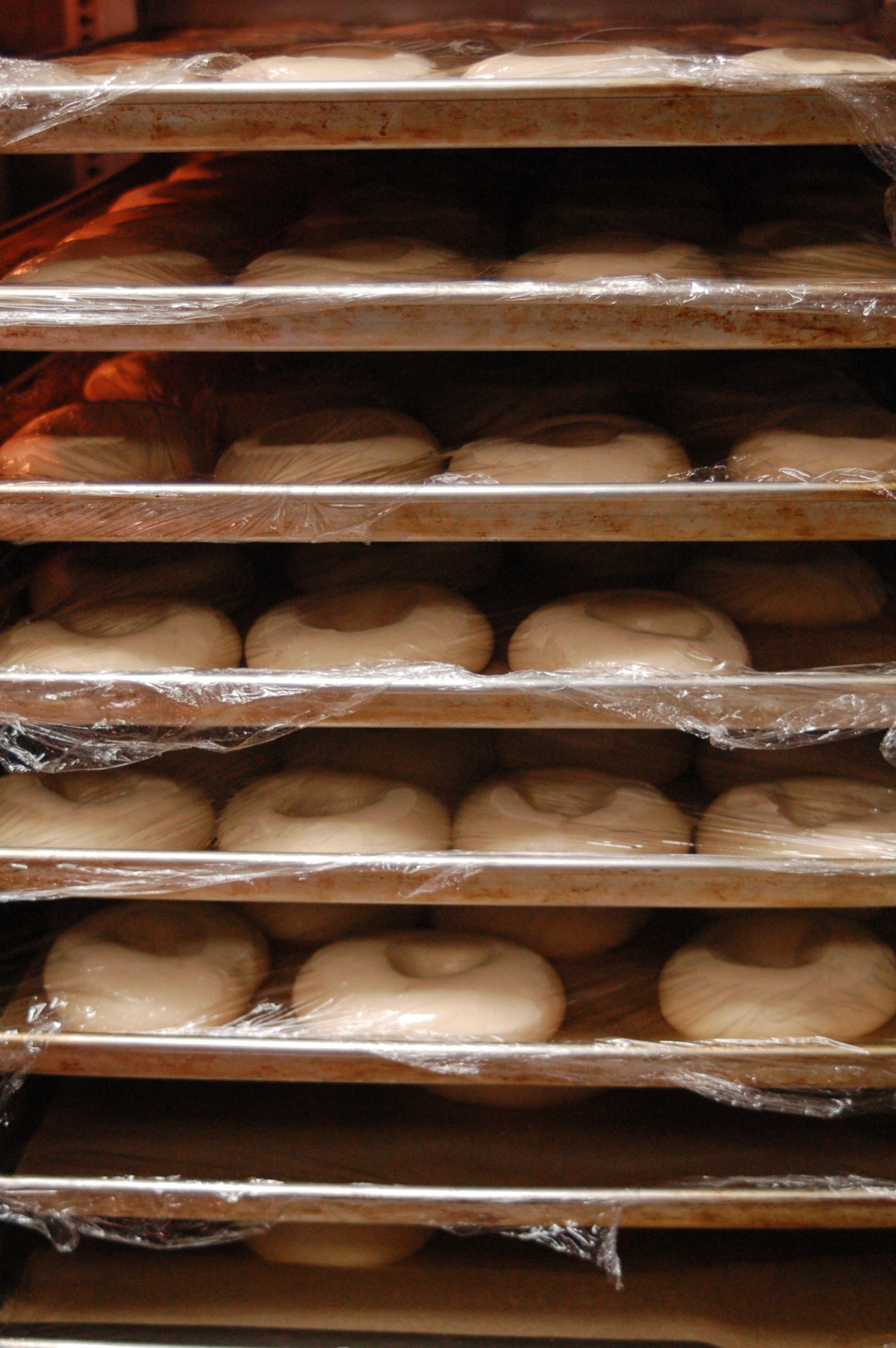Like juggling, playing the piano and tap dancing, the art of making bagels appears simple when done, but takes years of practice to perfect. At The Bagel Shop, Homer’s newest bakery and café at the corner of East End Road and Kachemak Drive, bagel baker and co-owner Gabe Chapin worked 10 years to perfect a recipe and process that has its heart and soul in the classic New York City bagel, but with a local twist.
“We pay homage to that art,” said co-owner Mikela Aramburu of their bagels. “This is an Alaskan bagel. This is from us and we are Alaskans.”
While The Bagel Shop opened Feb. 1, Aramburu and Chapin first brought their recipe to town last summer with a stand at the Homer Farmers’ Market. They were new in their relationship as both partners in life as well as business.
“We got to talk to people and see what they liked and also feel out how Gabe and I were going to work together,” Aramburu said. “Homer really embraced the bagels at the market.”
What they heard was “Wow.” Locals loved their soft, chewy golden bagels covered with schmears, the cream cheese spreads that include local flavors like basil and wild Alaska smoked salmon. The Bagel Shop also uses the classic bagel topping, cold cured salmon lox.
Better yet, visitors raved about their bagels, Aramburu said, such as New Yorkers arriving on the cruise ship Amsterdam.
“‘We heard there were good bagels here,’” Aramburu said visitors told them. “They were just blown away and they ended up buying four dozen to take on the ship.”
The idea of a bread with a hole goes back centuries, according to “A Short History of the Bagel,” an article by Joan Nathan in Slate magazine. The legend is that after the 1683 Battle of Vienna, a baker made a roll in the shape of a stirrup and called it a “beugel,” the Austrian word for “stirrup,” to commemorate the victory of King Jan Sobieski over Turkish invaders.
Sobieski also had lifted a ban in Krakow, Poland, allowing Jewish bakers to make bread within the city. Bagels came to New York City when immigrants came to America.
Aramburu and Chapin have worked since their teen years in the food business. At age 18, Aramburu managed the Urban Bakery in Seattle, where she grew up. Moving to Homer, Aramburu worked at K-Bay Caffe, Alice’s Champagne Palace at its pizza restaurant and at Fritz Creek General Store with Sean Maryott, who taught her “to play with food, try different things, get creative,” she said.
Chapin grew up in Saranac Lake, N.Y. He started out working at a pizza joint at age 14 and when he moved to Homer, worked at Fat Olive’s.
“I like cooking. I really like baking and I really, really love bagels,” he said.
At The Bagel Shop, Chapin bakes while Aramburu helps create the seasonings and spreads that go on the bagels and also comes up with new twists on a bagel sandwich, like “the Holy Trinity,” roasted jalapeños, garlic and anchovies.
“My part was not only falling in love with the bagel guy, but dressing up his bagels,” she said.
Making bagels involves a two-day process, starting with making the dough and letting it proof (see below). Aramburu and Chapin have developed a process that works at the commercial scale while staying true to the craft of the bagel.
Aramburu said she and Chapin plan to be back at the Farmers’ Market this summer.
“We’re trying in a lot of ways to start pretty simple and sanely with this. We want to be here for a long time,” Aramburu said. “I think the business was kind of born by the selfish need to eat a good bagel. To have some lox on a bagel, that’s the end all, be all of the bagel experience.”
How to make the perfect bagel
Bagels begin with dough made from barley malt, yeast, water and salt. The dough is rolled into small balls and allowed to proof.
“Once it’s at that perfect proofing point, we pop a hole in it,” Mikela Aramburu said. “Gabe’s really learned how to touch and feel and communicate with the dough.”
“The closest thing to it is steering a boat,” Gabe Chapin said of deciding when the dough is ready.
After the dough has proofed, the bagels are flattened and placed on racks to cool in a refrigerator, a process called retarding.
1: Racks of bagels sit in the refrigerator during the retarding process. After cooling overnight, the bagels will be baked the next day. “That’s how the bagel becomes a chewy thing. That’s what differentiates it from dough with a hole in it,” said Mikela Aramburu, co-owner of The Bagel Shop.
2: Bagels float in boiling water. Baking soda is mixed with water to make the mixture slightly alkaline. Bagel baker Gabe Chapin said good bagel dough can be judged by how it sinks and then floats in water. Boiling gives bagels the distinctive texture and the pockmarks on the surface.
3: After the bagels have boiled for a few minutes, Chapin brushes them with egg whites, which give bagels that glossy coating.
4: Spice mixtures and sea salt are sprinkled on the coated bagels, the final step before baking.
A tray of bagels coated with egg whites and sprinkled with sea salt and flavorings is ready to go into the oven. “A good bagel is fresh, boiled and baked that day,” said Mikela Aramburu, co-owner of The Bagel Shop.
5: Gabe Chapin holds a tray of freshly baked bagels. The trick in the baking time is to leave them in the oven just long enough. “Nice and golden is perfect,” said Aramburu.
The sign of a good bagel: when it is poked with a thumb, the bagel will dimple slightly and pop back up, he said.
Michael Armstrong can be reached at michael.armstrong@homernews.com.


